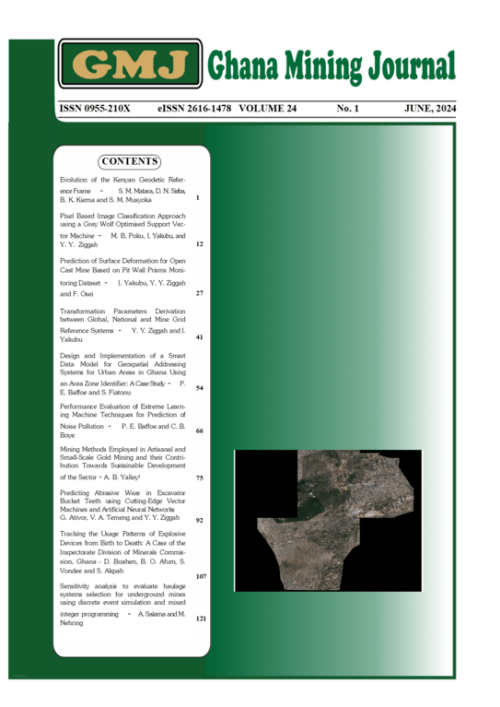Main Article Content
Predicting Abrasive Wear in Excavator Bucket Teeth using Cutting-Edge Vector Machines and Artificial Neural Networks*
Abstract
The mining industry faces a growing need to accurately predict abrasive wear of excavator bucket teeth in order to establish effective maintenance policies. Hence, developing robust predictive models that can effectively track the deterioration of ground cutting tools in harsh operational environments is a logical strategy to address this challenge. This research compared the effectiveness of three vector machine models for predicting abrasive wear of excavator bucket teeth: the least squares support vector machine (LS-SVM), the relevant vector machine (RVM), and the support vector machine (SVM). The research included a comparison of the LS-SVM model's predictive performance to that of three reference ANN techniques: radial basis function network, backpropagation neural network, and generalised regression neural network. To determine the most effective technique, the prediction results of these methods were assessed using metrics such as mean square error (MSE), root-mean-square error (RMSE), correlation coefficient (R), coefficient of determination (R2), mean absolute error (MAE), and Nash-Sutcliffe Efficiency (NSE). Additionally, the Bayesian Information Criterion (BIC) was employed to select the best performing predictive method. According to the evaluation results, the LS-SVM model outperformed both the RVM and SVM methods and the reference ANN techniques, as it achieved the lowest values for MSE, RMSE, and MAE (0.025726, 0.160394, and 0.131220) respectively, along with the highest values for R, R2, and NSE (0.999900, 0.999800 and 0.999794) respectively. Moreover, LS-SVM attained the lowest BIC value (-300.5774), demonstrating its superior ability to predict on-site wear of excavator bucket teeth.






